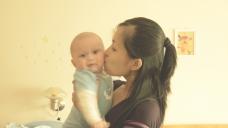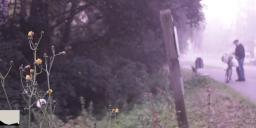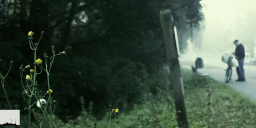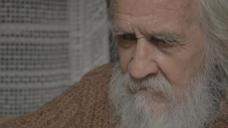
-
Well, I'm stumped.
As a new & and proud owner of a GH2, I've downloaded the latest (V1.1 25p) firmware and am investigating hacks.
A higher bitrate is obviously desirable - around 50Mbps will hit the spot, so I'm currently trying: "Driftwood Quantum X v5b and v5c 'β Pictoris' (baby Quantum X) VBR" (35 - 75Mbps variable)
The REAL question is about capturing more dynamic range and squeezing maximum latitude out of the GH2 to get results that resemble Cinestyle. I see evidence here...
... yet trying that hack, I see zero latitude difference.
Come to that, I've tried several hacks now, and they all look identical (apart from bitrate).
I'm trying to research this, but struggle to get real answers. What should one do to get Cinestyle results as above???
Thanks in advance...
-
I think one of the closest a-la Cinestyle profiles in Panasonic camera was the RETRO Profile in Lumix G2 - it holds picture characteristics that are ever closest to the famous Cinestyle, still no any hack or patch gives what this profile gives to shadows, middles, highlights, etc. like Canon DSLRs.
Unfortunately it's yellowish (kind of light sepia) and can't be modified by camera controls. I liked G2 when I owned it an year ago and now I still keep only three pictures taken with this RETRO profile. They were simple tests only from the first day I bought G2 that time, so they are not the best I took.
PLEASE, VITALIY, DRIFTWOOD AND OTHERS, MAKE A DEEP ANALYSIS OF G2 RETRO PROFILE AND TRY TO PUT/COMBINE SOME DETAILS TO YOUR LATEST GH1/2 PATCHES!!!
SUCH A PICTURE PROFILE WOULD BE ONE OF THE MOST DREAMS OF EVERYONE HERE.

 P1000143.JPG4000 x 2248 - 3M
P1000143.JPG4000 x 2248 - 3M
 P1000145.JPG4000 x 2248 - 4M
P1000145.JPG4000 x 2248 - 4M
 P1000170.JPG4000 x 2248 - 3M
P1000170.JPG4000 x 2248 - 3M -
It could be noted that the proper log picture profile on the Nikon cameras does make the image bloom like film at certain occasions. As mentioned, this is just one aspect of a camera and there are many others to consider that favor the GH cameras.
-
2 months and 50+ comments - but not additional comments from the OP since their original post. Seems a little odd.
The dynamic range of the GH2 is not a strength but the resolution is. You can easily make things less sharp by using softer lenses, diffusion filters, fog, etc. but few other DSLRs can record similar levels of detail when called to.
As many people mentioned before, lighting and exposure are very key to getting the most out of the GH2. I usually overexpose slightly if I want to get good shadow detail because raising the shadows can be tricky.
You play to the cameras strengths if you are using it, or you rent/buy a camera better suited to what you are doing at any given point.
-
you might want to try a tiffen ultracontrast filter, which lights all dark parts in your image/scene. i have one and it is nice for certain situations.
-
As far as I know, that part of the camera remains inaccessible. I have developed a set of standard inexpensive filters that can be used for white balancing, this atleast allows more saturated and thus cleaner colors for grading. I will post details in the other thread in a few more days.
-
Soooo... I might be a notch late. I assume after all of this time a log style PP will never come to fruition on the GH2?
-
@madrenderman "is a wrong thing, it's false, is true only if you do color correction in wrong way, on a 8bit space... if you do color correction in correct way (in 16-32 bit space) you have more room to work and you have a best video that you can grab from these informations."
Actually contrast could become too flat and separate midtone values could get rounded and encoded at the same value, in which case contrast would be lost. 32-bit grading helps only if there are variations in the recorded values but these variations could get lost by too flat contrast for scene lighting and camera settings.
-
"Definitely! If you shoot a flat scene too flat in 8 bit there is no way pulling it back to more contrast without getting massive banding and macroblocking."
is a wrong thing, it's false, is true only if you do color correction in wrong way, on a 8bit space... if you do color correction in correct way (in 16-32 bit space) you have more room to work and you have a best video that you can grab from these informations.
-
Video has inherent bias for luminance over chrominance. Bayer type sensor has twice the green (luminance) area compared to individual color channels. Video then compresses colors even further (4:2:2 -> 4:2:0). On the GH1 AVCHD cuts to empty black before actual black and very dark hues are mostly gray macroblocks.
Film on the other hand has the same light sensitive area for every channel, so it is 4:4:4 to begin with. The channels are of different sensitivity, because light has to pass through several emulsion layers and yellow masks between layers to reach the most light sensitive emulsion (blue). This is good to consider if film grain is applied, because each film emulsion layer has slightly different grain. The closest thing for a video would be to have three separate CCD's and the Red and Blue sensors were tuned for different sensitivity and yellow filters for Red and Blue CCD's were used to modify contrast. This configuration would match film. So it becomes obvious that a filter or filters are needed for technically more accurate film look.
For this I have been experimenting with magenta color correction filters of varying strength. It will fix the bias for luminance adding chroma. It will also compress contrast, so the dark hues are encoded at higher and thus better values. If the strength of the magenta filter is -1 f-stop of Green, then you will have the same amount of useful shadow detail more before AVCHD cuts to macroblocks. Contrast could become too flat, in which case midtones will suffer. So it becomes a matter of finding the right amount of Green stopping power filter for particular lens and scene.

 FogMagenta.png1920 x 816 - 698K
FogMagenta.png1920 x 816 - 698K
 FogGraded.png1920 x 816 - 2M
FogGraded.png1920 x 816 - 2M -
@producer "For example, I really doubt that Gh1/2 can ever be modified to produce a picture style like the attached snapshot below taken from the old 550D (cinestyle picture profile):"
You wanna bet? I've gotten very similar looks from my GH2. Nothing about that shot says Extremely high dynamic range. It's almost all mid-tones at the same exposure. With the right filters/light/settings you can yield very cinematic results with the GH2, if you don't know how to light... keep working at it.
-
I mean its simple, if the 5dmiii would cost exactly the same as the gh2, i would always go for the canon. But it costs more than 4 times as much. If i invested in that region, i would rather add a little cash and go for the fs100. Or i would wait and see how the black magic cinecam or the sony a99 or the gh3 will perform.
And yes, i think the gh2 is sometimes overhyped, when people say at the zacuto it beat the red or ari or whatsoever. Thats just ridiculous. Still, for that kind of money its a damn wonderful tool and nothing gets close to it for that price!!
-
Even with SLR or old lenses, which I use almost exclusively (you cant get older than some of the Leica R glass), GH2 footage would almost always look like Digital Beta (dead format, any one wants to resurrect it?) Try playing GH2 footage off your camera on an LED/ LCD TV, the larger the better. Maybe that's what Driftwood's AN settings try to overcome, to take some of the edge off that starkness.
-
Lol, well its the gh2's sensor with a canon lens. So what? I would put a magic canon sticker on the case or do what ever possible to get such an image for such a price. So the anamorphic lens makes it cinematic, great. For the price of the gh2 you just do not get a better or nearly as good image anywhere.
-
Yes, Mirrorkisser, but it can be partly said that this is not GH2. No any of Panasonic lenses can give such a look while Canon 50mm 1.4 is more than famous for that look. Also, let's remove the anamorphic lens and everything will confirm my words above.
-
partly true, but i think this one for example does not look videoish at all. Anamorphic of course adds to that.
-
@Mirrorkisser: What I mean is not the depth of field etc., but the characteristics of the picture itself. The question is not every movie to look like Canons, but whatever do, Panasonic GH1/2, even AF100/101 give the specifics of the video look with deeper shadows and higher contrast EVEN at the flattest profile, also the shape and contours of the objects are always sharper - again like the video look EVEN at the softest profile. Therefore, even processed with 5d2rgb, the picture remains a la serial novella look. At the same time Canon series are lucky with their cinema style profiles and hacks that are very effective instead on discussing about what is cinema look...
-
@producer: have you ever tried out the gh2 with the right lenses? It might be easier to get "cinematic" (then again what is the cinema look? there is not that one cinema look; and imagine if all footage one day looks like out of a canon and the same, how tedious) with the canons. Yet they have their negative side effects, too. The biggest one, that they cost a lot more, at least those that are worthwhile.
Plus its easy to get a shot like the one you posted with a gh2. You might even get that shallow depth of field with a consumer camcorder, due to the closeness to the objective.
-
Whatever you do, GH1/2 gives some kind of picture style that never can be cinematic or filmic at all. It's a kind of some artificial hybrid between filmlook and videolook, more videoish with no doubts.
The GH1/2 picture profiles have to be deeply hacked and transformed (which I already think is impossible!) to achieve something like the filmlook of Canons that are much much closer to the cinema look.
For example, I really doubt that Gh1/2 can ever be modified to produce a picture style like the attached snapshot below taken from the old 550D (cinestyle picture profile):

 20120904_115259.275.jpg1024 x 576 - 51K
20120904_115259.275.jpg1024 x 576 - 51K -
@RRRR: Absolutely. I based it off Atomos own instructions here: http://atomos.activehosted.com/kb/article/input-sources/dslr-cameras/panasonic-gh2
But I use Smooth instead of Nostalgic, but other than that it's the same. Set it to HBR, with a Mini HDMI out to my SmallHD DP4 and then an HDMI to the Ninja from the pass through. I deinterlace it in Premiere Pro and then master it in After Effects using this Chroma Fix plugin: https://sites.google.com/site/hsgh2chromafix/home
Or prepare that if I'm not involved in Post.
-
@nomad: Exactly. I've tried to turn my GH2 into a mini-cine cam as much as possible (will put up a picture to show later), with a rig clocking in at a solid 12 lbs! A lot of clients like the fact that they get it as ProRes straight away. Plus I saw quite a dit of difference in HBR (25p) between the Ninja and AVCHD and preferred the Ninja, but in 24p, I often just shoot straight AVCHD.
Howdy, Stranger!
It looks like you're new here. If you want to get involved, click one of these buttons!
Categories
- Topics List23,992
- Blog5,725
- General and News1,354
- Hacks and Patches1,153
- ↳ Top Settings33
- ↳ Beginners256
- ↳ Archives402
- ↳ Hacks News and Development56
- Cameras2,367
- ↳ Panasonic995
- ↳ Canon118
- ↳ Sony156
- ↳ Nikon96
- ↳ Pentax and Samsung70
- ↳ Olympus and Fujifilm101
- ↳ Compacts and Camcorders300
- ↳ Smartphones for video97
- ↳ Pro Video Cameras191
- ↳ BlackMagic and other raw cameras116
- Skill1,960
- ↳ Business and distribution66
- ↳ Preparation, scripts and legal38
- ↳ Art149
- ↳ Import, Convert, Exporting291
- ↳ Editors191
- ↳ Effects and stunts115
- ↳ Color grading197
- ↳ Sound and Music280
- ↳ Lighting96
- ↳ Software and storage tips266
- Gear5,420
- ↳ Filters, Adapters, Matte boxes344
- ↳ Lenses1,582
- ↳ Follow focus and gears93
- ↳ Sound499
- ↳ Lighting gear314
- ↳ Camera movement230
- ↳ Gimbals and copters302
- ↳ Rigs and related stuff273
- ↳ Power solutions83
- ↳ Monitors and viewfinders340
- ↳ Tripods and fluid heads139
- ↳ Storage286
- ↳ Computers and studio gear560
- ↳ VR and 3D248
- Showcase1,859
- Marketplace2,834
- Offtopic1,320









